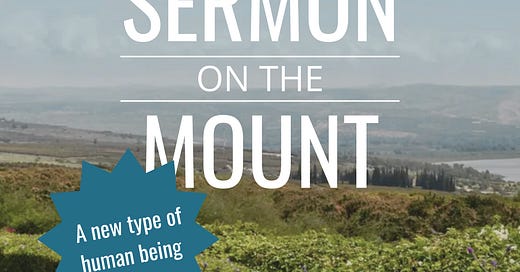Matthew 7:13-14: The two ways_Matthew 7:15-20: Warning false prophets_ Matthew 7:21-23: The insufficiency of the miracles
26/1/25
Questions
Matthew 7:13-14: The two ways
Why do few enter through the "narrow gate" but many through "broad gate"?
Is this passage about heaven and hell? Jesus has mentioned Gehenna1 three times in this sermon [5:22, 29, 30] but hell as the place of eternal conscious torment does not exist in the OT. What would Jesus’ hearers, or the Jews amongst them likely have understood?
How might someone practically apply Jesus' exhortation to "enter through the narrow gate" in their daily life?
Matthew 7:15-20: Warning false prophets
What two word pictures does Jesus use to explain how to discern if someone is truly speaking for God?
Why does Jesus advise looking beyond outward appearances when evaluating those who claim to speak for God [v15]?
How does the analogy of good and bad trees help us to evaluate a “prophet”?
What must we be careful of in all such judgments [vv1-6]?
What is the "bad fruit" of false prophets?
How does the image of good and bad trees connect to the Eden story?
What was the false prophet in Eden?
Matthew 7:21-23: The insufficiency of miracles
What is required to enter the kingdom of the skies?
Does this conflict with sola fide2?
Why might people call Jesus "Lord" but still not enter the kingdom of heaven?
What types of religious activities does Jesus mention that people might claim to have done in His name?
Why does Jesus respond "I never knew you" to those who claim to have done miracles in His name?
What is the application for us?
More
BibleProject Podcast/Sermon on the Mount»
In the Old Testament, Gehenna refers to the Valley of Hinnom, located outside Jerusalem. Gehenna was notorious for its dark history, serving as a place where children were sacrificed to pagan gods like Molech and Baal, even by some kings of Israel. The prophet Jeremiah condemned these practices and prophesied that it would be called the "Valley of Slaughter". The area was later used for burials and as a refuse dump where fires continually burned. Gehenna came to symbolise divine judgment and purification in Judaism [Bar, Eitan. HELL: A Jewish Perspective on a Christian Doctrine. New York: Perplexity Press, 2024] and later, in Christianity and Islam, a place of eternal conscious torment [Stewart Dingwall Fordyce Salmond, “HELL,” in A Dictionary of the Bible: Dealing with Its Language, Literature, and Contents Including the Biblical Theology, ed. James Hastings et al. (New York; Edinburgh: Charles Scribner’s Sons; T. & T. Clark, 1911–1912), 345. George Martin, Scripture Footnotes: The World of Jesus (Our Sunday Visitor, 2017), 116. R. H. Charles, A Critical History of the Doctrine of a Future Life: In Israel, in Judaism, and in Christianity (London: Adam and Charles Black, 1899), 156. Joel Stanley Davis, “The Fire Is Not Quenched: A Refutation of Evangelical Universalism,” Journal of Dispensational Theology (Spring–Winter) 18.55 (2014): 277. Erik Raymond, Is Hell for Real? And Other Questions about Judgment, Eternity and the God of Love, Questions Christians Ask Series (The Good Book Company, 2017), 21.].
Sola fide = faith alone. It was a core principle of the Protestant Reformation that we are saved by faith alone not works.




